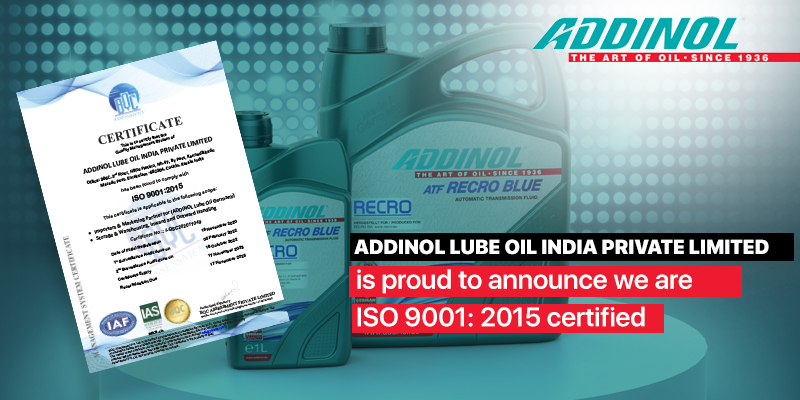Motorcycle for most people isn’t just a means of transportation, but altogether a lifestyle. Seasoned rider or a novice, the thrill and excitement of hitting the open road on a two-wheeler is indeed a different experience. However, with this thrill comes responsibility. Adequate maintenance of your motorcycle is fundamental to ensure optimal performance, longevity, and most importantly, safety.
In this article, we’ll guide you through the complexities of engine oils, including types, viscosities, and ratings, to help you choose the best one for your bike.
With numerous types of engine oils available in the market, there has been an increasing amount of confusion surrounding engine oils, with debates on the best engine oil for bikes and the significance of oil viscosity, including different rating scales such as 10W-30, 20W-40, 15W-50, and 20W-50. As a motorcycle owner, it’s essential to have a thorough understanding of these concepts to ensure that you make an informed decision when selecting the right engine oil for the bike.
Read on to discover ways to choose the right engine oil for your motorcycle and ensure that your bike operates smoothly and efficiently, providing you with endless hours of riding pleasure.
Why do you need to choose the right bike engine oil?
The engine of a motorcycle is undoubtedly the most important component of the vehicle, consisting of multiple mechanical parts that work together in harmony to convert fuel into mechanical energy that drives the bike forward. However, for the engine to function at optimal levels, it must generate a certain amount of friction, which is produced when the different parts come into contact.
This is where engine oil comes in. Engine oil plays a vital role in ensuring that the friction created by the engine parts does not cause any damage to the components. The primary objective of engine oil is to provide sufficient lubrication to minimize friction and wear, thereby ensuring that the engine runs smoothly and efficiently.
Now that we have come to terms with the significance of Bike engine oil, let’s discuss some tips for choosing the right two-wheeler engine oil.
Tips for choosing the right engine oil
Read the owner’s manual
The first and foremost step to choosing the right/ best engine oil for the bike is to carefully read the owner’s manual. The manual is an invaluable document that contains all the necessary information you need to know about your bike engine. The bike engine oil recommended by the manufacturer will be without a doubt specially formulated to meet the requirements of your motorcycle’s engine. Using the recommended oil type and viscosity ensures that the engine runs smoothly and efficiently and that all the engine parts receive adequate lubrication, thereby reducing wear and tear.
Riding style and operating temperature
Selecting the best engine oil for a bike requires a thorough consideration of your riding style, as different oils have unique purposes. Mineral oil is well-suited for daily commutes due to its ability to withstand daily wear and tear. On the other hand, semi-synthetic oils are ideal for longer drain intervals, ensuring maximum engine protection.
If you often ride in extreme conditions or enjoy long rides, fully synthetic oils offer superior performance and low viscosity, ensuring optimal engine protection. Furthermore, selecting the right viscosity is crucial in optimizing your motorcycle’s performance, and it should be based on your city’s highest and lowest temperatures.
Motorcycle oil Vs Automobile oils
It’s important to keep in mind that not all oils are created equal. While the oils designed for gas-powered cars and trucks may seem like a viable option, they are not necessarily suitable for motorcycles.
The main reason for this is that motorcycle engines tend to operate at higher temperatures than four-wheeled vehicles. The unique design of motorcycle engines means that they generate more heat and require oil that can withstand these extreme conditions. Frequent stops and starts in traffic can place additional stress on the engine and oil, making it even more critical to use motorcycle-specific oil.
Understanding the oil type
There is an array of two-wheeler engine oils available on the market today that can be overwhelming for the average consumer. These fall under three main categories, namely mineral oil, semi-synthetic oil, and fully synthetic oil.
Mineral Oil – Mineral oils are the most commonly used two-wheeler engine oils, especially for small engine capacities ranging from 80cc to 125cc, and so are often referred to as the best engine oils for a 100cc bike. While these oils have a shorter lifespan than synthetic oils, they offer adequate protection and lubrication for engines that operate at low mechanical outputs. It is advisable to avoid aggressive riding when using mineral oil as it may cause rapid depreciation or wear of engine parts.
Semi-synthetic oil – Semi-synthetic oil is a popular choice for motorcycle owners in India due to its unique blend of natural crude oil and synthetic oil. This blend offers greater versatility compared to mineral oils, making it suitable for a wide range of motorcycles. Semi-synthetic oil is particularly ideal for motorcycles with larger engine capacities, such as 150cc and 180cc, and is a great option for riders who engage in occasional sporty riding. With its ability to provide superior engine protection and longer oil life, semi-synthetic oil is a reliable choice for motorcycle enthusiasts who demand high performance from their machines.
Synthetic Oil – Synthetic oils for bikes are entirely produced in labs and have a low viscosity index, making them ideal for motorcycles with engine capacities greater than 180cc. Fully Synthetic engine oils for bikes are more expensive than mineral and semi-synthetic oils but provide better protection and last longer. Synthetic oil for bikes offers high lubrication ability and temperature resistance, making synthetic engine oil for bikes perfect for extreme conditions.
Checking the oil grade
Engine oils for motorcycles are classified based on their viscosity or thickness, and this classification is indicated by their grades. The Society of Automotive Engineers (SAE) has established a grading system to categorize engine oils based on their viscosity at different temperatures. The SAE grades range from 0W to 60, with lower numbers indicating thinner or less viscous oils, and higher numbers indicating thicker or more viscous oils.
The viscosity of engine oil affects its ability to flow through the engine and lubricate its moving parts. A lower viscosity oil, such as 0W or 5W, is ideal for use in cold weather, as it flows easily and ensures proper lubrication even in low temperatures. On the other hand, a higher viscosity oil, such as 50 or 60, is better suited for use in hot weather conditions or engines that generate more heat.
The most commonly used grades of two-wheeler engine oils are 10W30, 10W40, and 20W40. 10W30 oil is ideal for colder climates or for use in the winter season as it flows easily, while 10W40 and 20W50 engine oil for bikes is suitable for general use in a wide range of temperatures. These grades of engine oils are commonly used in bikes with engine capacities ranging from 100cc to 250cc.
Your bike’s engine is the heart of your motorcycle, so be vigilant with its maintenance. Even with top-notch components, an ill-maintained engine can ruin your riding experience. Timely and proper maintenance as well as choosing the best oil for the bike is crucial to ensure that it operates at its best, providing you with a safe and enjoyable riding experience.


